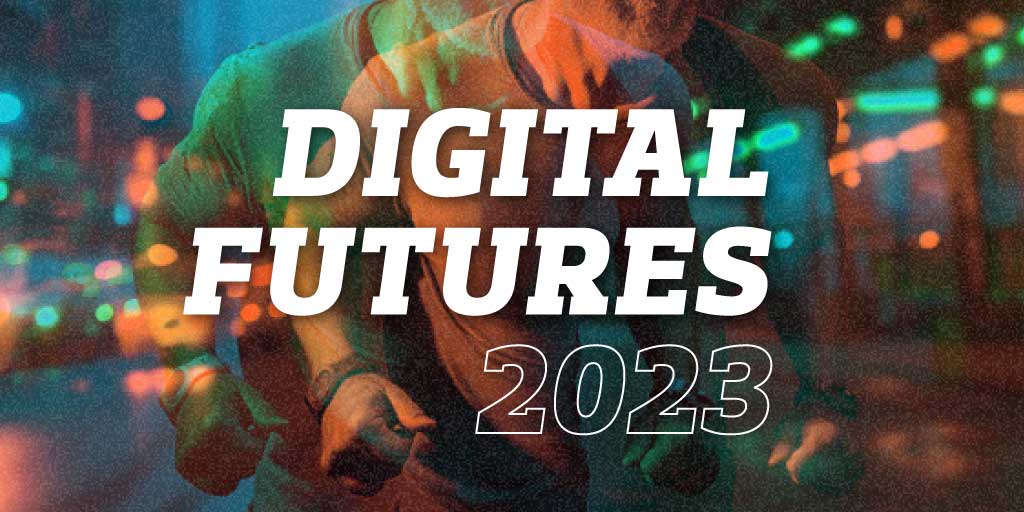The Digital Futures Report showcases the results of organisations and operators’ digital growth in 2023. Since the initial report in 2021, the report has shown great strides in digital awareness, strategy and digital experiences for consumers and organisations.
In 2023, there was widespread engagement from smaller operators testing and improving their digital strategies. In the current financial and technological climate, digital experiences are an expectation for many consumers.
The Challenge
COVID-19 started an expansion for improved digital experiences that has only increased since the lifting of restrictions. With rising costs for consumers, operators and organisations in the sector, consumers demand better value digital experiences. Protecting revenue has become difficult to maintain.
2023 saw the advent of AI for consumers and the sector with increased awareness of the need for digitalisation. Gathering consumer data to create personalised enriched approaches is necessary, but much of the sector has had difficulty catching up with the speed of the progress.
For new and existing organisations and providers, inclusivity and accessibility have been a significant area for development. The report recognises that digital transformation should not exclude all members of society. Not only because it aligns with diversity and ethical considerations but because it can strengthen customer relationships.
So, what were the main findings of the Digital Futures Report?

1. Consumers want improved digital experiences
There has been a drive towards digital experiences for consumers despite the cessation of COVID-19 restrictions. However, tightening consumer budgets has meant that consumers are looking for much more value for their money.
Whilst the maturity of digital experiences has dropped, this is largely a consequence of widening participation from new smaller and overseas operators. Data and insights, for example, were down five percentage points in 2022, but with the advent of new technologies, this is unsurprising.
Organisations are likely to feel left behind by the development of new technology. However, gathering and analysing consumer data is not a short process. As organisations become more comfortable with the pace of technological development, there is a greater opportunity to take advantage of the insights that this data provides, namely personalised enriched consumer engagement.
2. Established organisations are improving consistently
On average, large and private fitness operators were more likely to reach the rank of ‘Digitally Established’. With greater resources and sites than smaller operators, they are already benefitting from a ‘successful digital model’ and are great examples of what digital transformation is capable of.
Consistent with previous years, organisations with physical sites have scored highly. There is a greater incentive to organise and maximise digital on physical sites. Those with little to no sites are scoring consistently as Digital Experimenters, at 41%, and those with 11-50 sites, at 49%.
3. Organisational setups aren’t made for success
An equal lowest scoring category for fitness and leisure centres was organisational setup, with an overall percentage of 45%. However, less than 50% of organisations say their people are ‘digitally savvy’ or ‘digitally skilled’.
Challenges with digital literacy become more apparent when comparing the larger portion of staff with senior leadership. Despite being interested in digital, senior leadership often doesn’t understand digitalisation. To protect digital maturity, a consistent level of digital savvy is necessary, especially as while digital develops, opportunities for cybercrime increase.
4. Sector-wide systems failures
Sector-wide problems with operational management systems show the importance of updating and upgrading systems. The Digital Futures Report gives the example of legacy Leisure Management Systems (LMS), where multiple systems must be used simultaneously without seamless integration.
These systems create logistical problems and have largely been created for staff, not consumers. With the advent of the need for always-accessible wellness structures, upgrades to cloud-based systems represent the future of these operational systems.
By no means short or inexpensive process, the sector however does show an awareness of the need to get started. Providers are not commonly using machine learning or automation, with only 5% of organisations using them. The need to solidify the basics, such as consumer-ready websites, is taking precedence over emerging technologies such as AI and Web3.
5. Creation of digital strategies
Only 16% of organisations have declared their digital strategies to be complete, ambitious, up-to-date and supported with a comprehensive road map. There is, however, proof that sustained activity has raised this percentage, with those who have taken part in previous years, such as the Digital Futures Cohort, meeting a 43% structure during their participation.
Conclusion
If you’re looking for a step-by-step guide on assessing your own digital needs specific to the activities sector, why not download our free Self-Assessment Workbook? With the release of another Digital Futures Report, it’s clear that every organisation must maximise their digital footprint.
When you’re ready to take your next operational step – Coordinate Sport is there for all your organisational needs. Whether it’s HR or booking classes, our software can help you automate, expand, and improve your revenue.









